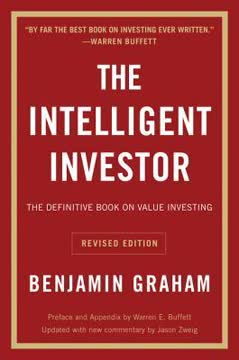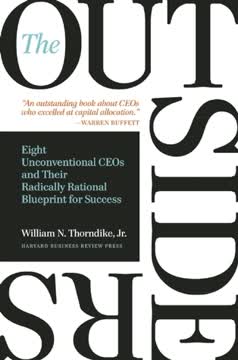가지 주요 요점
1. 가치투자는 저평가된 증권을 매수하는 데 중점을 둔다
"벤저민 그레이엄과 데이비드 도드가 처음 정의한 방식의 가치투자는 금융 시장의 세 가지 주요 특성에 기초한다."
기본 원칙. 가치투자는 시장 가격이 항상 증권의 진정한 가치를 반영하지 않는다는 아이디어에 기반을 둔다. 이 접근법은 다음을 목표로 한다:
- 내재 가치보다 낮게 거래되는 증권 식별
- 시장의 비합리성과 가격 변동을 활용
- 잠재적 손실을 방지하기 위한 안전 마진 제공
가치투자자는 재무제표, 산업 역학, 경쟁 위치를 분석하여 회사의 진정한 가치를 결정한다. 그런 다음 시장 가격이 이 내재 가치보다 크게 떨어질 때까지 인내심을 가지고 기회를 기다린다.
2. 안전 마진은 시장 변동성에 대한 보호를 제공한다
"우리는 벤 그레이엄이 강력히 강조한 이 안전 마진 원칙이 투자 성공의 초석이라고 믿는다."
위험 완화 전략. 안전 마진은 가치투자의 기본 개념으로 다음을 제공한다:
- 평가에서의 추정 오류에 대한 보호
- 시장 변동성과 예기치 않은 사건에 대한 완충제
- 시장이 결국 진정한 가치를 인식할 때 더 높은 수익의 잠재력
가치투자자는 일반적으로 추정된 내재 가치보다 30-50% 낮은 안전 마진을 추구한다. 이 접근법은 하방 위험을 제한하면서 시장 가격이 결국 기본 가치와 일치할 때 상당한 상승 잠재력을 제공한다.
3. 내재 가치는 자산 가치, 수익력, 성장으로 결정된다
"오늘날 주식, 채권 또는 사업의 가치는 자산의 남은 수명 동안 발생할 것으로 예상되는 현금 유입 및 유출을 적절한 이자율로 할인한 것으로 결정된다."
평가 프레임워크. 가치투자자는 세 가지 접근법을 사용하여 내재 가치를 평가한다:
- 자산 가치: 유형 및 무형 자산의 재생산 비용
- 수익력: 정상화된 수익의 지속 가능한 수준
- 성장: 회사의 경쟁 우위 내에서 수익성 있는 확장의 잠재력
이 프레임워크는 단순한 주가수익비율이나 할인된 현금 흐름 모델만으로는 제공할 수 없는 더 포괄적이고 신뢰할 수 있는 평가를 제공한다. 이는 투자자가 현재 자산과 미래 수익 잠재력을 모두 고려하면서 경제적 현실에 기반을 두도록 강요한다.
4. 경제적 해자와 경쟁 우위는 지속적인 가치를 창출한다
"세 가지 조건 모두의 존재는 회사가 자사 제품이나 서비스를 공격적으로 가격 책정하고 자본에 대한 높은 수익률을 정기적으로 달성할 수 있는 능력으로 입증될 것이다."
지속 가능한 수익성. 경제적 해자는 회사의 경쟁 위치를 보호하고 평균 이상의 수익을 지속할 수 있게 한다. 주요 해자 원천은 다음과 같다:
- 네트워크 효과
- 높은 전환 비용
- 무형 자산 (브랜드, 특허)
- 비용 우위
- 효율적인 규모
가치투자자는 오랜 기간 동안 높은 수익성을 유지할 수 있는 내구성 있는 경쟁 우위를 가진 회사를 찾는다. 이러한 해자는 회사가 경쟁 위협을 방어하면서 자신의 역량 내에서 성장할 수 있게 한다.
5. 분산 투자는 확신과 균형을 이루어야 한다
"우리는 포트폴리오 집중 정책이 투자자가 사업에 대해 생각하는 강도와 구매 전에 느껴야 하는 경제적 특성에 대한 편안함을 높이면 위험을 줄일 수 있다고 믿는다."
집중된 접근법. 분산 투자는 위험 관리에 중요하지만, 과도한 분산은 수익을 희석시키고 "악화"로 이어질 수 있다. 가치투자자는 종종:
- 10-30개의 주식으로 구성된 집중된 포트폴리오를 보유
- 보유 종목에 대한 깊은 지식을 개발
- 확신과 안전 마진에 따라 포지션 크기 조정
이 접근법은 투자자가 최고의 아이디어에서 이익을 얻으면서도 어느 정도의 분산을 유지할 수 있게 한다. 이는 철저한 연구와 과신을 피할 수 있는 규율을 요구한다.
6. 인내와 규율은 장기적인 성공에 필수적이다
"시간은 훌륭한 사업의 친구이며, 평범한 사업의 적이다."
장기적 지향. 가치투자는 다음을 할 수 있는 능력을 요구한다:
- 매력적인 기회가 나타날 때까지 기다리기
- 시장 변동성 동안 포지션 유지
- 내재 가치가 실현될 시간을 허용
성공적인 가치투자자는 인내와 감정적 규율을 기른다. 그들은 단기 성과를 추구하거나 시장 소음에 반응하는 유혹을 피한다. 대신, 그들은 보유 종목의 장기적인 기본 원칙과 시간이 지남에 따라 가치의 점진적인 복리에 집중한다.
7. 동기 부여된 판매자와 부재한 구매자는 기회를 창출한다
"자산이 비경제적 이유로 매각될 때 가장 흔한 설명은 어떤 유형의 제도적 제약이 소유자를 이동하도록 강요했다는 것이다."
시장 비효율성. 가치투자자는 다음과 같은 상황을 찾는다:
- 강제 매각이 일시적인 오가격을 초래
- 구매자 관심 부족이 저평가로 이어짐
- 복잡하거나 모호한 상황이 다른 투자자를 저해
예시로는 다음이 포함된다:
- 스핀오프
- 파산 후 증권
- 유동성이 낮은 소형주
가치투자자는 시장에서 간과된 이러한 영역에 집중하여 다른 사람들이 간과한 기회를 찾고 잠재적으로 우수한 수익을 얻을 수 있다.
8. 촉매는 회사의 숨겨진 가치를 해제할 수 있다
"환경 촉매는 기업이 운영하는 세계의 파괴적인 변화이다."
가치 실현. 인내심 있는 가치투자자는 시장이 내재 가치를 인식할 때까지 기다릴 준비가 되어 있지만, 촉매는 이 과정을 가속화할 수 있다:
- 기업 행동 (스핀오프, 자산 매각, 자사주 매입)
- 변화를 추진하는 행동주의 투자자
- 산업 통합
- 규제 변화
가치투자자는 보유 종목의 가치를 해제할 수 있는 잠재적 촉매를 식별하려고 한다. 이 접근법은 가치투자의 안전 마진을 보다 적극적인 가치 실현 태도와 결합한다.
9. 철저한 연구와 분석은 가치투자자에게 필수적이다
"투자자는 큰 실수를 피하는 한 몇 가지 일만 잘하면 된다."
지적 엄격함. 성공적인 가치투자는 다음을 요구한다:
- 비즈니스 모델과 산업 역학에 대한 깊은 이해
- 재무제표와 회계 관행 분석
- 경영진의 질과 자본 배분 평가
- 지속적인 학습과 투자 프로세스의 정제
가치투자자는 특정 영역과 산업에서 전문성을 개발하여 기회를 포착하고 함정을 피할 수 있다. 그들은 월스트리트 분석가나 경영진의 지침에 의존하기보다는 독창적인 연구를 우선시한다.
10. 단순함과 저비용은 우수한 수익으로 이어질 수 있다
"단순하고 저렴하게 유지하라"
효율적인 접근법. 가장 성공적인 가치투자자 중 일부는 놀랍도록 간단한 전략을 사용했다:
- 쉽게 이해할 수 있는 비즈니스에 집중
- 거래 및 거래 비용 최소화
- 복잡한 금융 공학이나 파생 상품 피하기
- 저비용 운영 구조 유지
이 접근법은 투자자가 단기 시장 움직임이나 복잡한 전략에 휘말리지 않고 기본 분석과 장기 가치 창출에 집중할 수 있게 한다. 또한 자본을 보존하고 불필요한 위험을 최소화하는 가치투자 원칙과 일치한다.
마지막 업데이트 날짜:
FAQ
What's Value Investing: From Graham to Buffett and Beyond about?
- Focus on Value Investing: The book provides a comprehensive overview of value investing, tracing its origins from Benjamin Graham to modern practitioners like Warren Buffett.
- Investment Principles: It emphasizes buying securities at a price significantly below their intrinsic value and outlines key principles such as the "margin of safety."
- Practical Applications: The authors discuss valuation techniques, portfolio construction, and profiles of successful value investors, making it a valuable resource for investors.
Why should I read Value Investing: From Graham to Buffett and Beyond?
- Historical Context: The book offers historical context and evolution of value investing, helping readers understand its adaptation over time.
- Expert Insights: It features insights from renowned value investors, providing a chance to learn from their experiences and strategies.
- Comprehensive Guide: Serving as a comprehensive guide, it is suitable for anyone looking to improve their investment acumen.
What are the key takeaways of Value Investing: From Graham to Buffett and Beyond?
- Intrinsic Value Importance: Understanding intrinsic value is crucial for successful investing, emphasizing buying stocks below their calculated intrinsic value.
- Margin of Safety: This concept is central, advocating for investments that provide a buffer against errors in judgment or market fluctuations.
- Long-Term Perspective: The book encourages a long-term investment horizon, focusing on the underlying value of companies rather than short-term market fluctuations.
What is the "margin of safety" in value investing according to Value Investing?
- Definition: The margin of safety is the difference between a stock's intrinsic value and its market price, acting as a buffer against potential errors.
- Ideal Range: Benjamin Graham suggested aiming for a margin of safety of at least 30% to 50% when purchasing stocks.
- Risk Mitigation: This concept helps mitigate risk, ensuring protection even if the market price declines.
How do I determine the intrinsic value of a stock according to Value Investing?
- Valuation Techniques: The book outlines techniques like discounted cash flow analysis and asset-based valuations for estimating intrinsic value.
- Focus on Earnings Power: It emphasizes assessing a company's earnings power by analyzing current earnings and adjusting for factors like depreciation.
- Asset Valuation: Start with tangible asset value, then consider earnings power and potential growth for a comprehensive intrinsic value estimate.
What are the three sources of value in investing as discussed in Value Investing?
- Asset Value: This refers to the current value of a company's tangible and intangible assets, assessed through balance sheet analysis.
- Earnings Power Value (EPV): Calculated based on a company's current earnings, adjusted for sustainability and capital costs.
- Growth Value: Considers the potential for future growth within a company's franchise, emphasizing sustainable and profitable growth.
What is the significance of behavioral finance in Value Investing?
- Investor Psychology: The book highlights how psychological biases can lead to irrational decisions, affecting stock valuations.
- Market Inefficiencies: These biases contribute to market inefficiencies, creating opportunities for disciplined value investors.
- Long-Term Perspective: Understanding behavioral finance helps investors avoid short-term pitfalls and maintain a long-term perspective.
How do successful value investors construct their portfolios according to Value Investing?
- Concentration vs. Diversification: The book discusses balancing concentration in well-researched investments with diversification to mitigate risk.
- Margin of Safety: Portfolio construction is guided by the principle of margin of safety, ensuring significant buffers against potential losses.
- Continuous Evaluation: Successful investors regularly evaluate holdings, adjusting portfolios based on changes in intrinsic value and market conditions.
How does Value Investing address the efficient market hypothesis?
- Critique of Market Efficiency: The book discusses the efficient market hypothesis, arguing that markets are not always efficient, allowing for mispriced securities.
- Bottom-Up Analysis: Emphasizes a bottom-up approach, focusing on individual company fundamentals rather than macroeconomic trends.
- Opportunities in Inefficiency: Suggests that market inefficiencies create opportunities for value investors to uncover hidden value.
What strategies do value investors use to find undervalued stocks according to Value Investing?
- Screening for Value: Investors use screening tools to identify stocks trading below intrinsic value, using metrics like price-to-earnings ratios.
- Focus on Financial Statements: Analyzing financial statements is crucial for assessing a company's health, looking for strong balance sheets and cash flow.
- Catalysts for Change: Identifying potential catalysts, such as management changes or restructuring, that could unlock value.
How does Value Investing suggest handling cash in a value investing strategy?
- Cash as a Default Strategy: Holding cash is prudent when the market is overvalued or lacks attractive opportunities, allowing for better conditions.
- Opportunity Cost Consideration: While holding cash may seem unproductive, it provides flexibility to act quickly when opportunities arise.
- Balancing Cash and Investments: Maintaining a balance between cash reserves and investments helps manage risk and capitalize on market conditions.
What are the best quotes from Value Investing: From Graham to Buffett and Beyond and what do they mean?
- "Investing is allocating capital.": Emphasizes the fundamental nature of investing as making informed decisions about resource allocation for returns.
- "The market is a voting machine in the short run, but a weighing machine in the long run.": Highlights that while market prices fluctuate based on sentiment, true value is recognized over time.
- "If the market is overvalued, it is a good time to hold cash.": Reflects a disciplined approach, prioritizing quality over quantity when opportunities are scarce.
리뷰
가치 투자: 그레이엄에서 버핏까지 그리고 그 너머는 가치 투자 원칙과 기법에 대한 포괄적인 안내서로 찬사를 받고 있다. 독자들은 이 책이 평가 방법, 실용적인 예시, 성공한 투자자들의 프로필을 깊이 있게 다루고 있는 점을 높이 평가한다. 이 책은 특히 금융 배경이 있는 사람들에게 유용하다고 여겨진다. 일부 독자들은 특정 부분이 덜 흥미롭다고 느끼지만, 많은 독자들은 기업 가치를 평가하고 경쟁 우위를 이해하며 가치 투자 전략을 적용하는 데 있어 유용한 통찰을 제공한다고 강조한다. 이 책은 일반적으로 가치 투자자들에게 필수적인 자원으로 잘 알려져 있다.
Similar Books















